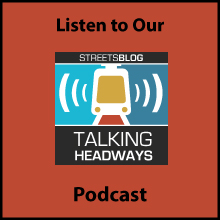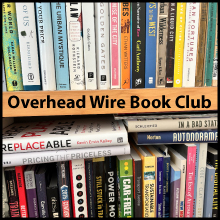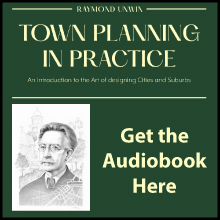Podcast Transcript: 282 – Complete Communities with Houston Mayor Turner
May 21, 2020
We’re chatting with Houston Mayor Sylvester Turner about the city’s Complete Communities program, which seeks to coordinate each city department to support historically under-resourced neighborhoods. The full transcript can be found after the break.
JW: Mayor Sylvester Turner, welcome to the podcast.
ST (2m 45s): Well, thank you very much. Thanks for having me.
JW (2m 47s): So before we get started, can you tell us a little bit about yourself?
ST (2m 50s): I’m a native Houstonian, I grew up in the city of Houston, come out of the large family, I’m number six of nine kids. Both of my parents, for example, well neither one graduated high school, and my dad died of cancer when I was 13. My mom was a maid, worked downtown, reared nine kids by herself. Then I graduated from University of Houston and then Harvard Law School, came back, and I’ve been a lawyer now for a number of years, and taught at Thurgood Marshall School of Law, Texas Southern for a number of years. Then I started a law firm downtown and served in the Texas legislature for 27 years, and then I’ve been mayor since January of 2016. I’ve got one daughter.
JW (3m 28s): Awesome. What made you first interested in cities?
ST (3m 31s): You know, quite frankly, I’ve always been interested in cities. Of course, Houston, I was born and bred here. I used to take the bus from where the neighborhood in which I grew up and come downtown and walk up and down Main Street and Louisiana and Smith Streets in downtown Houston. I always was impressed about the big buildings and just said, “You know, one of these days when I grew up, I wanna go work in one of those buildings.” But the city is, I mean it’s been great, cause I love the city of Houston, and I always wanted the opportunity to assist at any level when given the opportunity. So after being in the legislature for a number of years. Well, in fact I ran for mayor in 1991, fell short, ran in 2003, fell short, was not going to do it again, but ran this last time and the outcome was different.
JW (4m 17s): That’s when I first moved back to Houston. I was born in Kingwood, or in Humble actually I should say, and I lived in Kingwood, and then we moved away. And then we moved back in 1989, so it was around the time when I was growing up in Houston when you first ran. So that’s interesting.
ST (4m 29s): Oh, okay. In fact, I was just in Kingwood at a town hall meeting last week.
JW (4m 33s): Nice, nice. So we wanted to chat with you about the Complete Communities program in Houston, and I wanted to ask what the program is and why you have personally made it a priority as mayor.
ST (4m 43s): Well, you know, when I became mayor in January of 2016, and I said I didn’t want to be the mayor of two cities in one, you know, “have and have nots.” You know, they say that this is a growing, dynamic city, but they are still neighborhoods, communities in the city of Houston that have not grown as much. They’ve been underserved and under-resourced for decades. I was born and reared and still live in one of those communities, Acres Homes in northwest Houston. And so the focus was to make sure that every community in the city of Houston was a community of promise, opportunity, inspiration, and so in every community, regardless of where you live, there should be good housing, mixed income housing for everyone, good quality neighborhood schools, parks and green space, economic business job opportunities, quality grocery stores, good infrastructure, safe communities. Those are the things that should exist in every neighborhood regardless of which part of town you may reside. And so the focus was to take a look at those communities that have been underserved and under-resourced and to channel as many resources into these areas by leveraging the resources internally within the city of Houston with our outside partners like financial institutions, developers, faith based organizations, nonprofits, endowments. And when you’re taking their resources and leveraging them with other resources such that, for example, no one group feels like they’re going into these communities by themselves. You’re kind of spreading, sharing the risk, so to speak. And by focusing all of these resources in a particular geographical area, the goal was to have the greatest transformational effect in the shortest period of time. And so you can’t do everybody at the same time. There are just too many. And if you try to do everybody at the same time, you’d just be spreading limited resources and you will have an incremental effect rather than a transformational effect. So initially we chose five communities: Acres Homes, Near Northside, Second Ward, Third Ward and the Gulfton area were the initial five. And you pretty much stay in these communities for about, you know, on average two years, sometimes more, sometimes less, and you are working with the local leadership and a lot of community engagement because we don’t go in telling people, you know, what they need. We sit down, talk with them, determine what are the needs, what are the things they would like to have and then we work with them on how to achieve those things. And then lastly, it’s not about just doing a project and claiming success, because what we are trying to establish are sustainable communities. And once the investments are made, that the leadership is there, the network is there, that these communities can continue to sustain themselves and advance after we have moved on to the next area.
JW (7m 38s): That leads into discussion about building capacity in these neighborhoods and building capacity at the city level in terms of the departments that are involved. How does that change over time in terms of building capacity in the neighborhoods to support the work that they’re doing over the longterm?
ST (7m 52s): Well, it’s a collaborative process. It’s not just one department, you know, the City Houston, because they try to align all of our departments in order to achieve the objectives that we have set. So for example, the planning department for the city of Houston taking the initial lead of that at the very beginning, and I named a director of Complete Communities, in this case a person by the name of Shannon Buggs. So that’s our singular mission, is to drive the success of the Complete Communities strategies. Working with the Planning Department, working with, for example, the Department of Neighborhoods, Solid Waste, because in many of these communities, for example, illegal dumping is a major issue that pulls down these communities, so we tie in with Solid Waste in addressing that. We’re working with Public Safety, so with the working with the Houston Police Department, they are tied into this process. Office of Business Opportunity because a part of it is, for example, establishing of workforce programs and business and retail opportunities. So they are connected. The Mayor’s Office of Education is important, because that connects you with all of our schools in the area. And then when it comes to our summer job Hire Houston’s Youth Initiative, we really are attracting a lot of these students, 16 to 24, from many of these communities. And so for example when I came into office a little over four years ago, our Hire Houston’s Youth summer job program, we were at 450. Last year, that number had mushroomed to 11,400. This coming summer the plan is for 15,000. And then we’re working, for example, with my sustainability office in one of my departments. So in the Sunnyside area, which is one of the communities that we have named, we are looking at establishing one of the largest urban solar farms in that area that will take 300 contaminated acres that have been sitting there for quite some time, and repurposing that space which we believe will help to revitalize that community. So there are many different departments that we’re working with and that you have to align them, because the whole goal is to focus, in a targeted way, resources into these communities to bring about transformation. And then the other point is working with the health department because in many of these communities, for example, they are food deserts. And so working with the health department, working with my economic development department, the goal is also to add these major retail grocery stores to come into communities where they otherwise would not have come, to entice them to come into these communities as well.
JW (10m 28s): You’ve been working on this program for several years now. I’m curious what’s something that surprised you about the results and the outcomes that you’ve seen so far?
ST (10m 36s): Well, people are hungry for the transformation. They want the improvements, they don’t want to be displaced. But they also recognize that if you don’t have the improvements, people are going to go someplace else, and they are going to lose their communities, their neighborhoods as they have known them. So it’s important, for example, they want affordable housing. Quite frankly, they want mixed income housing. They want housing for people at all income levels because you don’t get the quality grocery stores unless you know, they see the rooftops. So they want the improvements, but they want to also hold on to the character, the character and the personality and the culture of their neighborhoods. And so that becomes a critical component. And then I will say to you, when we’re talking to financial institutions, you know, financial institutions, they are doing a lot of good things, but it’s kinda difficult to get people to engage in a paradigm shift, to get them to utilize another model other than the model that they have become accustomed to. And what I said, for example, to the financial institutions, “You know, I’m not saying you’re not doing a lot of good things, you’re doing a lot of good things, but in many ways you’re missing the mark.” Because these communities and neighborhoods have remained the same, which means we need a paradigm shift. And that requires a lot of community engagement and working directly with the people in these communities. They know what they want and they know what they need. They just haven’t had the investments in these communities and the resources in order to get the things they need to improve their communities. And that’s what we are attempting to work with them on. So when we were taking contaminated space, for example, in a neighborhood, 300 acres and turning it around and repurposing it, that will change the whole character of that neighborhood and they will benefit. When we are putting in these financial and economic empowerment centers like in Acres Homes, that will help people to take the resources that they have and really utilize their resources in a way that can benefit not only themselves, their families, but the community as a whole. So that’s important. Building affordable housing allows a lot of people to stay there, building mixed income housing allows, for example, the children that have grown up in these areas who are now working in good paying jobs, they want to return to their neighborhoods so they don’t have to go outside of the city to find that housing product. Putting in quality grocery stores helps the community out medically, because it’s hard to tell people to eat healthy if they don’t have the healthy options. And so that would cut down on diabetes and a lot of other physical and other elements that will come because their diet is just not a good one. So it all fits. It all ties together, but it’s not an overnight thing. It will take time to reverse what has occurred, to address the inequities or the fact that these communities have been ignored in terms of major investments over decades, not just individually. There’s a lot of environmental issues in these neighborhoods because over the decades they’ve been used as dumping grounds and so you really, there are a lot of things that we need to address, but we need to do it in a very holistic fashion.
JW (13m 47s): What will you take from this progress that you’ll take into other communities in the city of Houston as well?
ST (13m 52s): Well, you know you can’t do it all at the same time because we don’t have the resources, but as we transform, put these communities on the path of transformation, let me put it that way. Then other communities are learning from what we were doing and they’re wanting I won’t say the same thing, because the whole notion of Complete Communities is customizing the goals and objectives to that particular community. What is needed in one community may not be the same in another. Each community is different. And so what the communities are eager to have is the assistance, the support, the resources, the investments. Because you know they can come up with a list of projects that they need, but oftentimes like in many of these communities, they just lack the resources and the funding. And so we’re looking to brin g partners to the table with resources, with the expertise that can transform them, and communities are eager for that level of support.
JW (14m 51s): And how does this tie into federal policy? There’s a lot of policies that help support the Complete Communities program I imagine, but how do those play into this? Policies like opportunity zones or HUD programs?
ST (15m 2s): You get it, like opportunity zones, and opportunity zones are intended to drive investment into many of these communities that have been underserved. But we just need to make sure that people are not investing on the periphery of these communities where the benefits are not driven into the hearts of these communities and neighborhoods. And so we still have to convince investors that it’s worth assuming the risk to go into the heart of these communities. And then not just bringing the projects that they want to bring, but investing in projects that the community has identified are the things that are important for them and the things that they need. So it can’t be a one way street where you’re coming in and saying, “Okay, we have the resources and we have the projects and we want to put these projects into your neighborhood.” It doesn’t work that way. That’s a win-lose. And it needs to be a win-win. So there needs to be a partnership up and down the line. And then with respect to HUD investments, affordable housing, good infrastructure, okay? In these communities, in these neighborhoods, that’s a critical component because you don’t want to build affordable housing, for example, and these communities continue to flood. So it’s important that the infrastructure is there to sustain the development that’s being placed in these communities. So opportunities, zones, policies of HUD are very important. Any other grants, grant funding, all of those things are important. Health and human services and what they are doing and how we drive those resources and grant dollars into these communities. All of that’s critically important
JW (16m 38s): In the future when you look back at these neighborhoods and what has happened in them, improvements that have been made, how will you know if the program has been a success?
ST (16m 46s): Number one way you will know is whether or not the people are living there, okay, are still living there and want to continue to live with these communities because they do. You don’t want the gentrification, so you want to look at these communities 5 years, 10 years, 20 years from now, and see whether or not the generations are still there. That’s one way of judging the success. Whether or not when you look at these communities, you are looking at a totally different set of people in these communities. The makeup of the communities has dramatically changed. If that happens, no, we have not been successful yet. We’ve led to gentrification. But you want to see people who have been in these communities for decades continue to remain in these communities, and at the same time you want to see the improvements. You want to see the quality grocery stores. You want to see not just parks with the name on it, but you want to see quality parks that quite frankly, you can place these parks anywhere in the city and they would be value added. That would be a plus. Sound, good infrastructure. If you see that, better roads, better streets, that would be a plus. The removal of, for example, of illegal dumping trash that can pull down communities, abandoned buildings. If you see less of those, less of the illegal dumping, then that would be a noticeable improvement. And when you see the quality of neighborhood schools improve, okay, because people want to be close to the schools, quality neighborhood schools, then that would be important. And quite frankly from my vantage point, when we see many people who are no longer living outside of the city of Houston, but they are returning back to the neighborhoods in which they were born and reared, then that would be a positive sign as well.
JW (18m 28s): What’s next for the program?
ST (18m 29s): It’s more of the same. It’s more of the same, because the goal is to build sustainable communities and to put the elements in place that the community itself will continue to move forward, continue to be innovative, creative, will continue to attract investors and others to the community, where there are shared partnerships and it’s the win-win for everyone. So that doesn’t stop. It simply continues. You just start looking at focusing in on other communities to work to bring them up to the scale.
JW (18m 59s): Awesome. Well, Mayor Turner, thanks for joining us. We really appreciate it.
ST: Thank you for having me, appreciate it.







